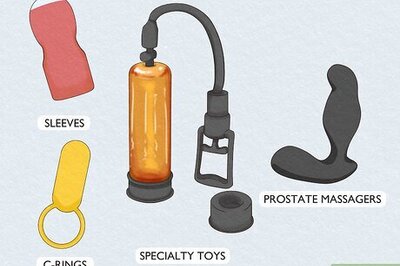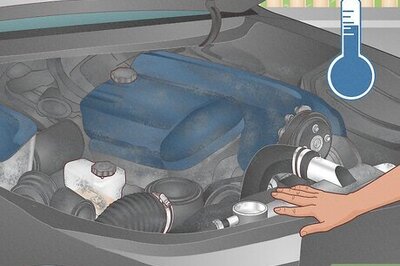
views
Instead of waking up to honking cars, imagine being woken up by the melodious sounds of different birds, breathing fresh and pure air, waking up to blues skies, and sunrise lighting up a clear sky with beautiful golden hues. This is not any luxury experience being offered by some travel site but the life of citizens of Delhi post the lockdown.
In the wake of Covid-19, the 21-day lockdown of the country has had a dramatic impact on air pollution across India. India presently houses 1.3 billion residents. This lockdown has emerged to be a temporary but successful solution to another pressing problem faced by its citizens, i.e. suffocating pollution.
Various national and global agencies are concerned that the Covid-19 pandemic could be an economic catastrophe for the world. Although India might not enter a global recession, experts believe that the impact on the growth of Indian GDP will be significant.
On March 26, the Indian government announced a Rs 1.7 lakh crore relief package aimed at providing support for those hit the hardest by the lockdown. The RBI also joined the fight later with sharp cuts of interest rate along with a series of unconventional measures to lend to besieged businesses.
In India, GDP growth is already at its lowest level in a decade, and any further deterioration in economic performance will cause more suffering to workers whose wages have recently fallen.
This is the biggest lockdown that the country has faced in recent times, leading to the closure of all factories, markets, shops and places of worship. Most public transport and construction activities also have been suspended. To overcome this pandemic, India has also asked its citizens to stay at home and practice social distancing.
As per the report dated April 2, 2020, by the World Health Organization, India has witnessed 1,965 confirmed cases of Covid-19, resulting in 50 fatalities.
Post enforcement of lockdown, megacities of the country have much less harmful microscopic particles (PM 2.5) and nitrogen dioxide in the atmosphere, which are released by vehicles and power plants, according to IQAir AirVisual's 2019 World Air Quality Report.
According to the IQAir AirVisual's 2019 World Air Quality Report, data shows that the average PM 2.5 concentration in New Delhi has dropped by 71% in one week: from 91 micrograms per cubic meter on March 20 to 26 on March 27 after the blockade began.
Mumbai, Chennai, Kolkata, and Bengaluru have also seen a decrease in these air pollutants. Nitrogen dioxide dropped from 52 per cubic meter to 15 over the same period.
“The air is undeniably cleaner, just look in the blue sky, it's very calm. There are no honking cars, and there is no traffic. As a result, the customarily polluted air in Delhi is cleaner than at any time that many locals remember,” said Sonal Agrawal, a resident of Lajpat Nagar.
A very modest secondary analysis shows that pollution values across the world are much lower than the average of the last five years. We are further expecting it to decrease in the coming weeks. This is just one of the potentially beneficial effects of Covid-19 lockdown on the environment.
Many other factors that have improved the overall situation in NCR are reduced production at local factories in Faridabad, Ghaziabad, etc. and less frequent domestic flights over the city. However, not all factories have closed. Mask manufacturing plants in and around NCR have been booming since the onset of the situation.
A similar effect has been seen in other parts of the world. Dr Sudesh Agrawal, a scientist at CASE University, Ohio, encountered a similar situation, with at least a 5-10% drop in CO2 emissions this month as traffic fell by more than 35%.
Additionally, newspaper reports suggest the reduction in tourism in Venice has allowed nature to take control, and the water in the canals has been cleaned up, resulting in resurfacing of floating fish inside, which are otherwise invisible.
Similar patterns demonstrating a drastic reduction in pollution have also been observed in parts of Europe and China since their closure, with industrial and transport networks almost at a standstill.
Although this is proving to be good for the environment, researchers and scientists are also concerned that these numbers of patients may increase rapidly as soon as the situation returns to normal. We certainly wouldn't want it, but only time will tell what awaits us. The pandemic has killed more than 28,000 people and disrupted the global economy leaving millions unemployed, in debt, or an uncertain future.
It’s time to sit back and realise that the society is fragile, that values are more important than costs, that events in one part of the world can affect us all; and recognise the need for scientific evidence to guide the emergency response.
Effect of this unplanned "experiment" to control the spread of this pandemic and flatten the curve has also triggered various positive chain reactions across other facets, including environment, and this will continue to undermine our understanding of how it works and be carried ahead.
(Naman Agrawal is Innovation Lead, AIM, NITI Aayog and Himanshu Agrawal is Young Professional, AIM, NITI Aayog. Views expressed are personal.)



















Comments
0 comment